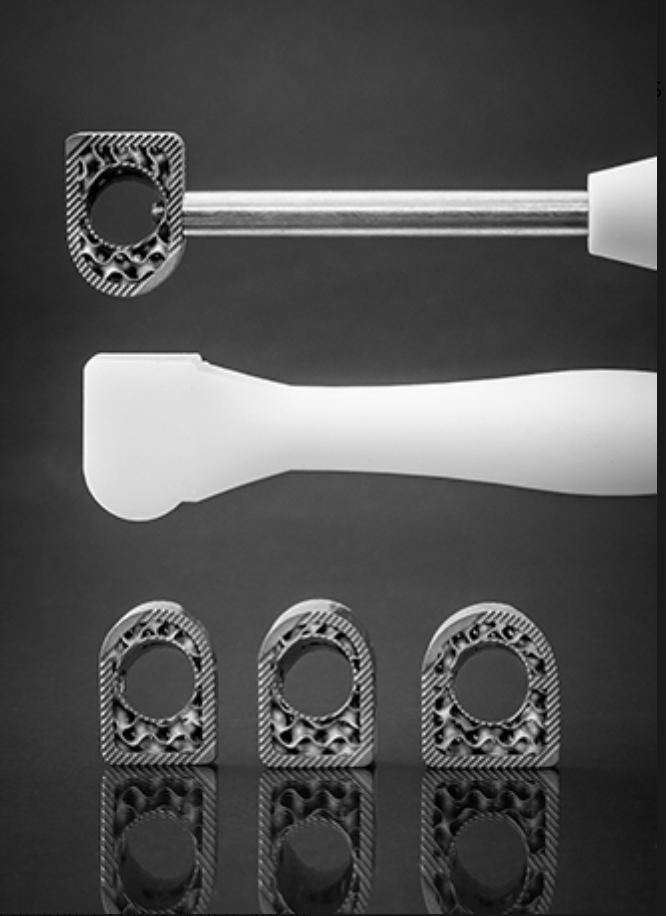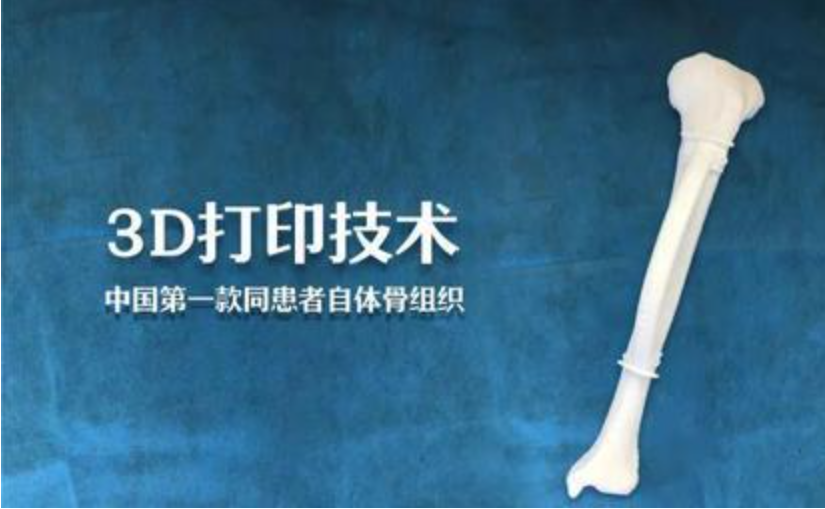restor3d is an affiliate of Duke University and is a3D printingTechnology Platform Design and ManufacturingbiologymedicineImplantsas the coremedicalequipment company. April 20, 2022 Antarctic bears are informed that restor3d is at risk in the fifth roundinvesthas raised $23 million (to date, a total of $42 million has been raised from multiple investors through several rounds) for3D printingTechnologies in the study of reconstruction and repair of the human body.
restor3d thinkssurgicalFamous for doctors supplying medical devices and delivering customized 3D printed implants to patients, 3D printing biomedical implant technology combines 3D printing, biomaterials, biomechanics and artificial intelligence, and is a highly interdisciplinary Cross-disciplinary research. restor3d currently mainly customizes implants for trauma patients and tumor patients, and has been used by the United Statesfoodand FDA approval for 3D printed implants in the foot, ankle and spine.
restor3d says it will use the funding to further expand 3D printing personalizationOperationThe range of application of the solution, such as musculoskeletal surgery (including upper and lower extremity joints), spine surgery and trauma, etc.Also, the startup will develop machine learningsoftwaretools to assist engineers in designing patient implants, engaging inclinicalBasic research for pre-clinical research and expansion of commercial teams to maintain market dominance.

△ Hip wedge system Wedge system. Image courtesy of restore3d.
To support the company’s growth, restor3d will move into a new facility in early 2023, located in the top high-tech Research Triangle Park, which will help expand capabilities for patient implant design, instrument manufacturing, and surgeonstrainingand educational laboratory capabilities.At the same time, restore3d works with other3D printing companyShare the park, which has the potential to develop future partnerships.Other up-and-coming startups on the campus include 3D software company Geomagic (now a 3D Systems part) and3D printing serviceProvider Plastibot.
Ken Gall, professor of engineering at Duke University’s Pratt School of Engineering and co-founder and chief technology officer (CTO) of restor3d, said he was looking forward to entering the next stage of development and thanked investors for supporting restor3d’s hard work. He pointed out that all restor3d employees, Surgeons and dealers are all part of helping patients.
future surgical implants
Restor3d, founded in 2017, went out of “stealth mode” after 2018, and its products and technologies are based on Gall’s research on 3D metal printing during his time at Duke University. Since then, restor3d has been manufacturing proprietary implants such as osteotomy wedges and cervical cages using laser powder bed fusion of medical grade polymers and metals. It continuously updates implants by encouraging surgeons to offer 3D printed personalized surgical solutions across multiple musculoskeletal aspects.
In a recent speech, Gall pointed out that the currentorthopedicsSurgery is mostly done with “brute force solutions”, but every patient has different needs. restor3d hopes that preoperative planning and 3D printed specialized instruments and implants will be part of all orthopaedic surgeries in the future. Gall believes in using3D printing technologyAbility to perform surgical procedures and even allow patients to avoid amputation.
A few years ago, Gall was responsible for designing and printing custom titanium implants for a young patient who suffered severe calf bone damage in a car accident. Samuel Adams, an orthopedic surgeon at Duke University, explained: “The patient’s condition was very critical at the time. The patient had a lot of bone loss. Instead of amputating the patient like other hospitals, we implanted a 3D-printed implant in the patient’s body. The implant replaces the lost bone.” Gall worked with Adams to use the patient’s CT scan to manufacture and design the scaffold to support the patient’s weight while healing and growing new bone around the titanium structure. After analysis, they designed a 4-inch piece of porous solid titanium to replace the patient’s damaged distal tibia.
Gall points out that the challenge with leg or ankle implants is that they must support bone growth while supporting the patient’s wound healing process; other complex design factors include the external shape of the implant, the skeleton of each patient shape, and how bones grow.

△restor3d’s 3D printed implant replaces the distal tibia. Image courtesy of Duke Health.
restor3d has applied for six patents, including surgically customized devices and implants that promote osseointegration (i.e. bone ingrowth into metal implants). The startup has been 3D printing implants using biomaterials such as titanium and cobalt-chromium alloys, as well as biocompatible polymers, and is working closely with surgeons in the U.S. to help patients with severe orthopaedic needs.
For example, with the help of Dr. Amiethab Aiyer, an orthopaedic surgeon at the University of Miami (UM) in Florida, restor3d used cobalt-chromium alloy 3D-printed prosthetic metal bone to create total talus replacements for patients. The patient had sickle cell disease, a genetic disorder that blocks blood flow, which caused avascular necrosis of her talus.This 3D implant procedure was successfully performed in 2019, which allowed the Miller School of Medicine to use3D printing technologyThe forefront of creating orthopaedic solutions.

△ 3D printed metal ankle implant, image courtesy of the University of Miami.
In restor3d’s latest strategic news, restor3d announced a merger with Kinos Medical, a leading total ankle replacement company. One of Kinos Medical’s best-known products is the Kinos Axiom Total Ankle System, “the first biomechanically accurate ankle system” that mimics the motion of a patient while walking. It is believed that the merger of the two companies will create greater value.
restor3d has multiple FDA product licenses and partners, which helps the company become one of the most innovative companies in the field of 3D printed bioimplants. With the new funding and its 3D printed implants and disposable device models, restor3d will enable simultaneous expansion across different markets, providing innovative solutions to pressing clinical needs.
my country also has a lot of research on 3D printing implants
●On April 11, 2022, the Spine Surgery Department of Nanxishan Hospital of Guangxi Zhuang Autonomous Region applied 3D printing technology to customize a printed guide plate for a patient with axial fracture and dislocation, and completed the cervical spine reduction and internal fixation on the posterior approach efficiently and safely. Relying on the 3D printing center of the hospital, through innovative development, the spine surgery has successfully realized the surgical innovation of posterior pedicle fixation of the upper cervical spine, providing patients with efficient, safe and personalized diagnosis and treatment.

△ A 3D printed guide plate that matches the anatomy of the upper cervical spine.Photo courtesy of Li Liang, correspondent of Guangxi News Network
●In February 2022, 37-year-old Xiao Li suffered from pain in his left leg for three months and then went to the Orthopedics Department of the Second Hospital of Shanxi Medical University, where he was diagnosed with malignant fibrous histiocytoma of the left tibia. The doctor gave two treatment methods: one is to do amputation, which can effectively control the recurrence; the other is to do traditional limb salvage surgery, although the leg is saved, but the risk of recurrence is very high. This dilemma is a dilemma for both the patient and the doctor. But fortunately, Xiao Li was finally able to have a new choice in addition to these two dilemmas. Researchers from the Second Hospital of Shanxi Medical University used 3D printing technology to print the autologous bone tissue of Xiao Li’s left leg, as shown in the figure below, which is also the first autologous bone tissue of the same patient in China. The “ink” used for printing is the autologous bone tissue extracted from Xiao Li’s body, so there is no need to worry about the occurrence of rejection.

△ 3D printing autologous bone tissue
(responsible editor: admin)


0 Comments for “restor3d: $23 million in fifth round of funding to 3D print biomedical implants!”